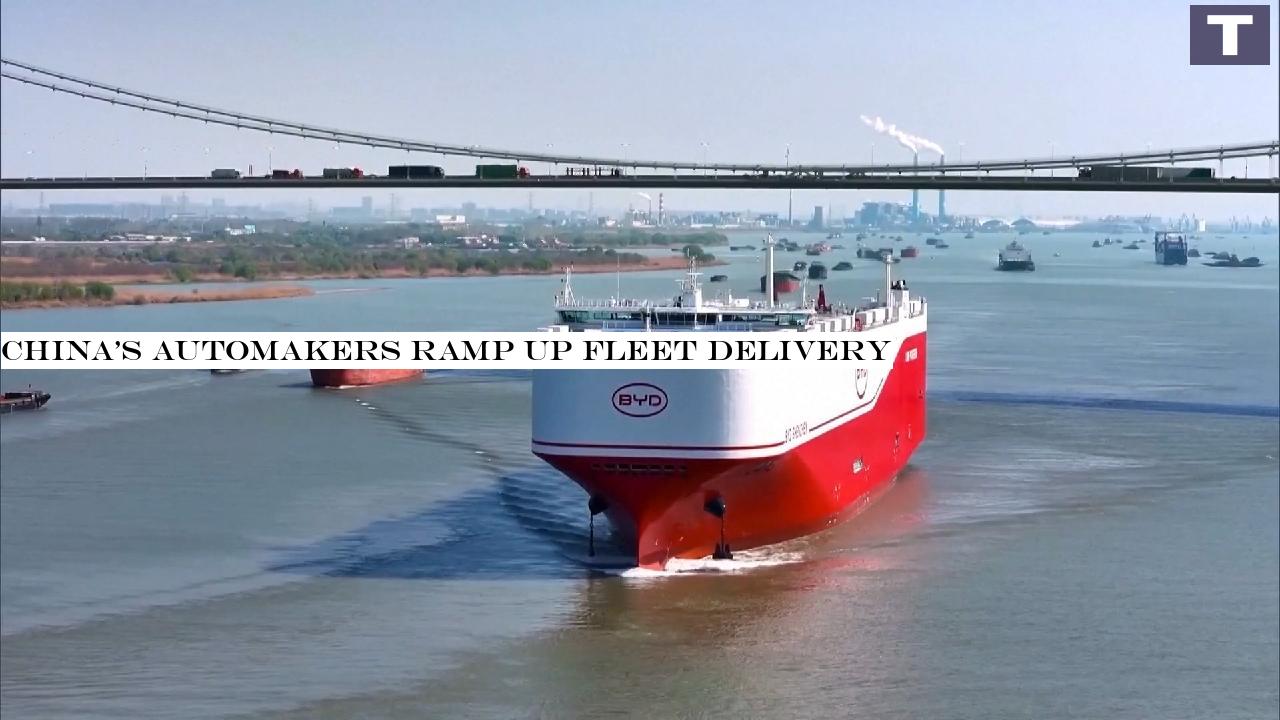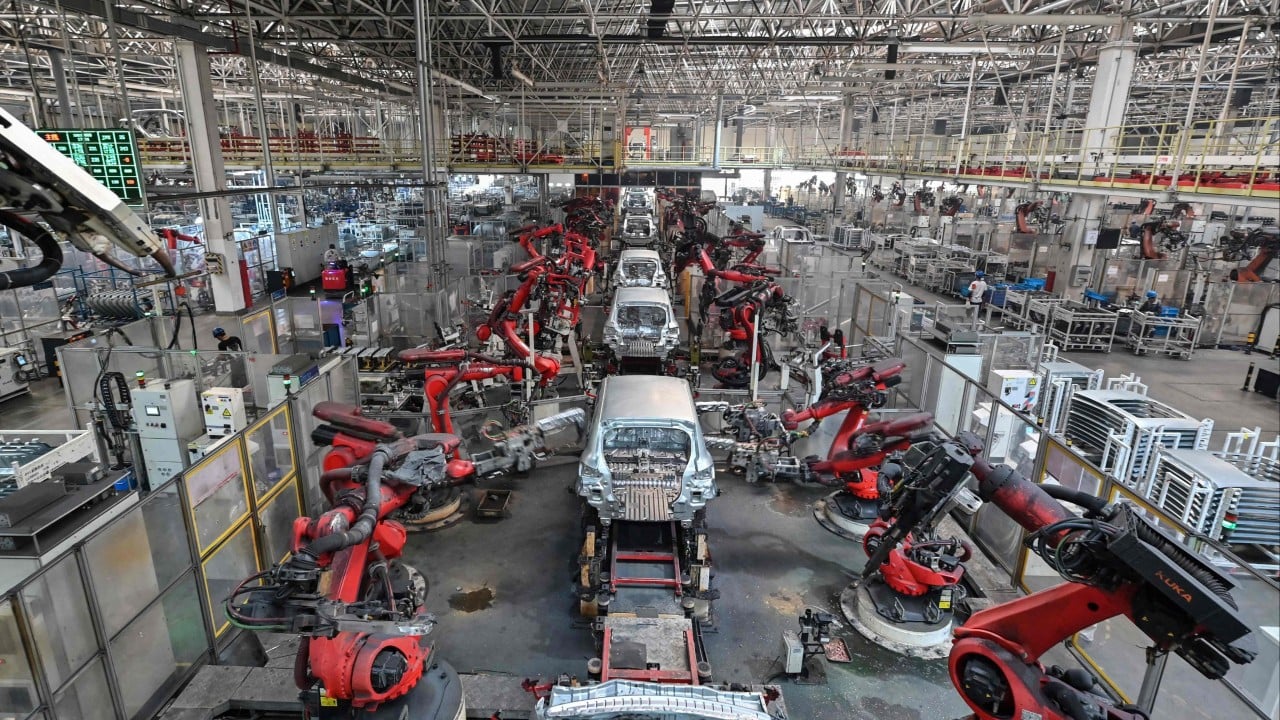
China delivered the world's largest ocean-going car carrier vessel on Thursday, which departed for Europe loaded with some 7,000 domestically produced new energy vehicles. The car carrier was built by SAIC Anji Logistics Co., Ltd., a subsidiary of SAIC Motor Corporation Limited.
The vessel is one of the world's largest ocean-going car carriers with a maximum capacity of 9,500 standard vehicles and a maximum speed of 19 knots, according to Zhuang Jingxiong, general manager of SAIC Anji Logistics."Later, we will put seven more super-large car carriers into service.
Our ocean shipping routes for finished vehicles will cover all major car markets around the world, with more than 100 destinations," Zhuang said.In recent years, as Chinese automakers like BYD and Chery accelerate their global push, the need for domestic shipping capacity has become increasingly urgent.A ro-ro ship sailing.
/CCTV PlusA ro-ro ship sailing.
/CCTV PlusA more resilient supply chain at lower costFor decades, the global car shipping market has been dominated by Japanese and South Korean firms.
High chartering fees, coupled with shipping delays and limited cargo space, have significantly raised costs and eaten into profit margins for Chinese automakers.To address this, SAIC Anji Logistics Co., Ltd.
has invested 10 billion yuan (approximately $1.4 billion) to build a fleet of 12 ultra-large ro-ro ships, each with a capacity exceeding 7,600 vehicles.
The company expects this move will reduce per-vehicle shipping costs by about 10 percent, according to Zhuang."Shifting from 'borrowing ships to go abroad' to 'building our own ships for long-distance voyages' not only enhances the resilience and stability of the supply chain, but also helps break the monopoly in international shipping," said Liu Yan, the deputy secretary-general of the China Association of Automobile Manufacturers."More importantly, it allows China's auto industry to gain a stronger voice in the global value chain and enables Chinese brands to go global with greater confidence."In late April, BYD delivered its fourth large car carrier in east China's Jiangsu Province, ahead of the ship's maiden voyage to Brazil.
Named BYD Shenzhen, it also has a capacity of carrying more than 9,000 vehicles.In the first quarter of the year, BYD's fleet transported more than 25,000 new energy vehicles to overseas markets, according to Gao Xiaolin, a shipping operations employee of BYD.The automaker is expected to deliver its next ro-ro ship BYD Xi'an, which has a capacity of 9,200 vehicles, in the middle of the year, and all of its eight ro-ro ships will be put into operation by the end of the year.On January 21 this year, the first ocean-going car carrier of Chery Automobile set sail for Europe.
The company plans to put its second ship into service in June and is building the third one.The new-generation homegrown ro-ro ships feature various innovations, making them advanced and environmentally friendly.For instance, the Anji Ansheng is designed with a methanol fuel reserve, and the BYD Shenzhen can run on both liquefied natural gas (LNG) and traditional marine fuels, enabling it to reduce carbon dioxide emissions by about 23 percent compared to traditional vessels fueled by heavy oil.The BYD Shenzhen is fitted with cutting-edge technologies, including self-developed photovoltaic energy storage systems that can achieve zero carbon emissions during loading and unloading operations.

 17
17





















